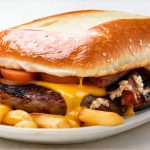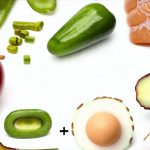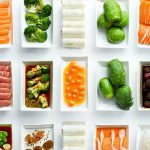Bloating after meals is an incredibly common experience, often leaving people feeling uncomfortable, self-conscious, and even in pain. It’s not usually a sign of something serious, but that doesn’t make it any less disruptive to daily life. Many factors can contribute to post-meal bloating, ranging from the types of food we eat and how quickly we consume them, to underlying sensitivities or digestive habits. Understanding these causes is the first step towards finding relief and enjoying meals without dreading the aftermath. It’s important to remember that everyone’s digestive system is unique, meaning what triggers bloating for one person may not affect another.
This article explores practical dietary adjustments – an “anti-gas diet” approach – designed to minimize bloating and promote comfortable digestion. We won’t be focusing on restrictive elimination diets, but rather on thoughtful food choices and eating habits that can significantly reduce gas production and improve digestive efficiency. The goal is to identify foods that are more easily digested and incorporated into a balanced dietary pattern, rather than rigidly excluding entire food groups. This approach emphasizes mindful eating and empowers you to take control of your digestive well-being. You may also find it helpful to explore tips for transitioning to a gut-friendly diet if you’re making significant changes to your eating habits.
Understanding the Culprits: Foods That Commonly Cause Bloating
Certain foods are notorious for contributing to gas production in the gut. These aren’t necessarily “bad” foods; they’re simply more likely to ferment in the colon, leading to increased gas and bloating. – Legumes (beans, lentils) contain complex carbohydrates called oligosaccharides that our bodies struggle to digest fully. This leads to bacterial fermentation and gas production. – Cruciferous vegetables (broccoli, cauliflower, cabbage) also have compounds that can be difficult to break down, resulting in similar issues. – Dairy products, for those with lactose intolerance, can cause bloating due to a lack of the lactase enzyme needed to digest lactose. – Fructose and sugar alcohols found in fruits, honey, high-fructose corn syrup, and artificial sweeteners can also contribute to bloating, especially in individuals sensitive to these sugars.
It’s important to note that preparation methods can significantly impact how well we tolerate these foods. For example, soaking beans overnight and discarding the water before cooking reduces their oligosaccharide content. Similarly, thoroughly cooking cruciferous vegetables makes them easier to digest. Paying attention to portion sizes is also crucial; even relatively easy-to-digest foods can cause bloating if consumed in excessive amounts. The key isn’t necessarily avoiding these foods entirely but learning how to manage them effectively within your diet. If you’re experiencing consistent issues, consider looking into how to reduce bloating after eating.
Eating Habits for a Calmer Gut
Beyond what we eat, how we eat plays a massive role in digestion and bloating. Rushing through meals or eating while stressed can disrupt the digestive process and lead to increased gas production. – Chew thoroughly: This is arguably one of the most important steps. Chewing breaks down food mechanically, making it easier for your stomach to digest. It also stimulates saliva production, which contains enzymes that begin the digestive process. – Eat slowly: Savor each bite and pay attention to your body’s hunger and fullness cues. Eating too quickly can lead to swallowing excess air, contributing to bloating. – Stay hydrated: Drinking plenty of water throughout the day aids digestion and helps move food through the digestive tract. Avoid drinking large amounts of liquid during meals, as this can dilute digestive enzymes.
Mindful eating is a powerful tool for reducing bloating. It involves focusing on the present moment while eating, paying attention to the taste, texture, and smell of your food. This practice encourages slower eating and better digestion. Consider creating a relaxing atmosphere during meal times – turning off screens, avoiding distractions, and enjoying your food in a calm environment. These simple changes can have a profound impact on your digestive comfort. Improving posture during and after meals can also contribute to better digestion.
Simple Swaps for Bloat-Free Meals
Making small adjustments to your diet can yield significant results. Here are some easy swaps to minimize bloating: – Replace carbonated beverages with water or herbal tea: Carbonation introduces excess gas into the digestive system. – Choose whole grains over refined grains: Whole grains provide more fiber, which promotes healthy digestion and prevents constipation (a common cause of bloating). However, if you’re not used to a high-fiber diet, increase your intake gradually to avoid discomfort. – Opt for lean protein sources: Fatty foods take longer to digest and can contribute to bloating. Choose grilled or baked chicken, fish, or tofu instead of fried or processed meats.
Furthermore, consider incorporating probiotics into your diet. Probiotics are beneficial bacteria that live in the gut and aid digestion. You can find them in fermented foods like yogurt (with live cultures), kefir, sauerkraut, and kimchi, or as a supplement. A healthy gut microbiome is essential for optimal digestive function and reduced bloating. Remember to introduce probiotic-rich foods gradually to avoid any initial discomfort.
The Role of Fiber: Friend or Foe?
Fiber is crucial for overall health, but it can be a double-edged sword when it comes to bloating. – Insoluble fiber adds bulk to the stool and helps move food through the digestive tract, preventing constipation. Good sources include whole grains, fruits, and vegetables with skin on. – Soluble fiber dissolves in water and forms a gel-like substance, slowing down digestion and helping regulate blood sugar levels. Sources include oats, beans, apples, and citrus fruits.
While both types of fiber are beneficial, excessive intake or sudden increases can lead to bloating and gas. If you’re prone to bloating, start by gradually increasing your fiber intake and ensuring you’re drinking plenty of water to help move the fiber through your digestive system. Experiment with different sources of fiber to find what works best for your body. Some individuals may tolerate soluble fiber better than insoluble fiber, or vice versa. A post-recovery diet can also help reintroduce fiber effectively after illness.
Identifying Personal Triggers & Keeping a Food Diary
Ultimately, the most effective way to manage bloating is to identify your personal triggers. What causes bloating for one person won’t necessarily cause it for another. – Keep a food diary: Track everything you eat and drink, along with any symptoms you experience (bloating, gas, abdominal pain). Be specific about portion sizes and timing of meals. – Elimination diet (with caution): Consider temporarily eliminating suspected trigger foods from your diet to see if it reduces bloating. Always reintroduce foods one at a time to identify which ones are causing the problem. This is best done under the guidance of a registered dietitian or healthcare professional.
Don’t underestimate the power of observation and self-awareness. Pay attention to how different foods make you feel, both immediately after eating and several hours later. It’s also important to consider other factors that may contribute to bloating, such as stress levels, sleep quality, and physical activity. A holistic approach – addressing diet and lifestyle – is often the most effective way to achieve long-term digestive comfort. You might find meal timing plays a significant role in your personal triggers as well.


















